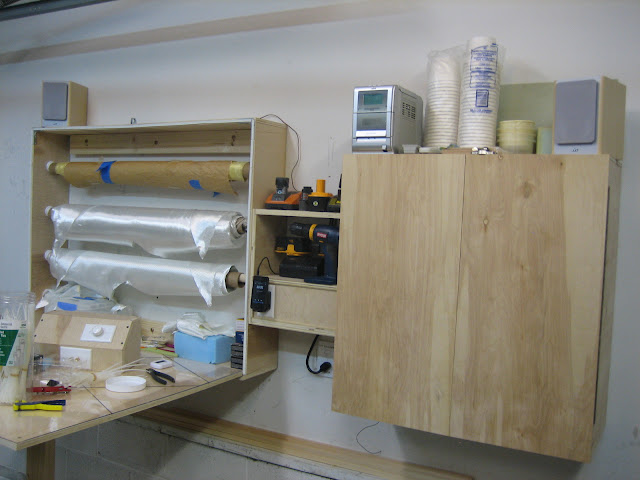Let's just say, you have mixed up a batch of epoxy...
... what? ...
... it looks like molasses, and won’t mix very well? ...
... all right, let’s take a step back for a moment!
It is true that 75F is about the coldest you want your shop to be for laying fiberglass, but you are just finding out that epoxy becomes more and more viscous as the temperature drops, in other words it gets thick and harder to work with. Not only that, but as you pour it over the fiberglass it hardly wets the cloth, and when you try to force it through, you get a lot of air pockets under the cloth, where there should be none.
The only thing you can do about it at this point, is help yourself with a hair dryer to warm up the epoxy. You will see the epoxy turn more liquid, and want to flow more freely into the fiberglass, wetting it with ease, and displacing the trapped air bubbles.
But really, you could have planned for this, and have the epoxy warmed up before hand.
I will share my solution for this problem. It is not an original idea, but I believe that imitation is the best form of flattery.
I modeled my heat box after my friend Wade’s box, which I inherited when he moved to Germany. Because it was a little too small for my needs, I built a bigger one, included some upgrades, totaled his old box (sorry Bro!), and reused some of his hardware on mine.
 |
| Box frame |
 |
| Wired for heat (light bulb supplies the heat) |
 |
| Light bulb controlled by a thermostat (wiring behind the insulation) |
 |
| Heated epoxy box (right) |
 |
| The way things should be |
Now that we have warm epoxy, let’s get back to work!


No comments:
Post a Comment